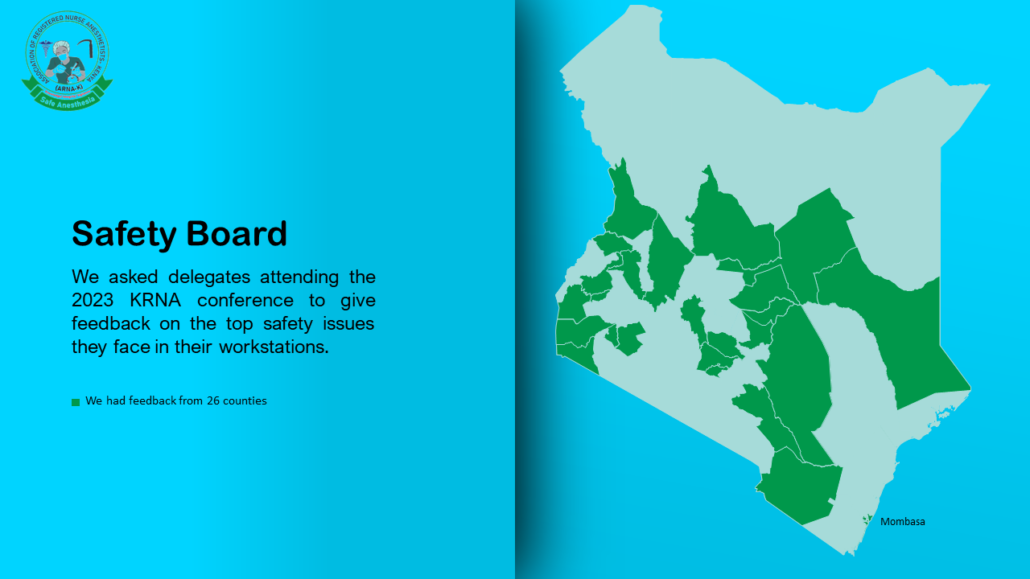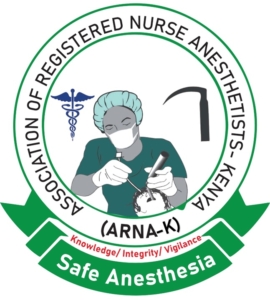KRNA
Kenya Registered Nurse Anesthetists
KRNA Calendar
| M | T | W | T | F | S | S |
|---|---|---|---|---|---|---|
| 1 | 2 | 3 | ||||
| 4 | 5 | 6 | 7 | 8 | 9 | 10 |
| 11 | 12 | 13 | 14 | 15 | 16 | 17 |
| 18 | 19 | 20 | 21 | 22 | 23 | 24 |
| 25 | 26 | 27 | 28 | 29 | 30 | |
Patient safety stands at the core of quality healthcare. To gain insight into the pressing safety concerns faced by healthcare professionals, we reached out to delegates attending our 10th Annual Conference for their perspectives on the main safety concerns at their workstations. The responses we received highlighted several critical areas that demand attention and improvement. This blog post delves into some of these concerns and explores how healthcare organizations can work toward fortifying patient safety.

Understaffing: The staff shortage in anesthesia, perioperative, and operating room (OR) settings is a significant concern. Understaffing can lead to overworked employees and a heightened risk of errors. Health facilities must address this issue by hiring additional personnel and implementing strategies to manage workloads effectively.
Inadequate Equipment: Monitoring patients during and after surgery is paramount. Insufficient monitoring equipment can lead to undetected complications. This situation is even worse for pediatric patients where available equipment is unsuitable for pediatric use. Missing critical equipment, such as defibrillators and laryngoscopes, can hinder a healthcare facility’s ability to respond effectively to emergencies. Facilities must invest in acquiring and maintaining basic equipment essential for patient safety. In addition, the provision of adequate biomedical support and a clean power supply ensures that medical equipment remains functional for a longer period.
No Designated PACU: A designated post-anesthesia care unit (PACU) is indispensable for the safe recovery of surgical patients. The absence of a dedicated PACU can hinder patient recovery and necessitate immediate attention.
Slow Procurement Processes: Delays in procurement of essential equipment and drugs will impede anesthetists’ capacity to provide appropriate care. Streamlining procurement processes is essential to ensure that healthcare organizations can acquire the necessary equipment efficiently.
Patient safety is a collaborative endeavor involving healthcare professionals, administrators, and policymakers. Solutions call for joint efforts, allocation of adequate resources, and an unwavering commitment to continuous improvement. By taking concrete steps to mitigate these risks, healthcare facilities can establish a safer environment for patients and uphold their dedication to delivering quality healthcare.
Kenya Registered Nurse Anesthetists
| M | T | W | T | F | S | S |
|---|---|---|---|---|---|---|
| 1 | 2 | 3 | ||||
| 4 | 5 | 6 | 7 | 8 | 9 | 10 |
| 11 | 12 | 13 | 14 | 15 | 16 | 17 |
| 18 | 19 | 20 | 21 | 22 | 23 | 24 |
| 25 | 26 | 27 | 28 | 29 | 30 | |
